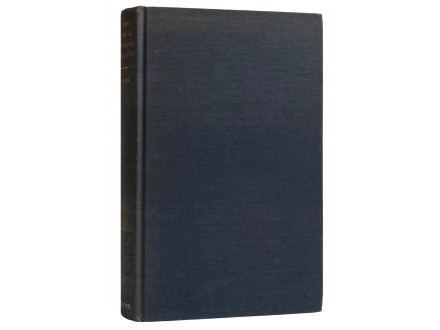Richard Cobb - Paris and Its Provinces, 1792-1802
| Cena: |
| Želi ovaj predmet: | 5 |
| Stanje: | Polovan bez oštećenja |
| Garancija: | Ne |
| Isporuka: | Pošta CC paket (Pošta) Post Express |
| Plaćanje: | Tekući račun (pre slanja) |
| Grad: |
Novi Sad, Novi Sad |
ISBN: Ostalo
Godina izdanja: 1975
Jezik: Engleski
Autor: Strani
U dobrom stanju, signatura biblioteke
Publisher : Oxford University Press; First Edition (1975)
Language : English
Hardcover : 279 pages
ISBN-10 : 9780192121950
ISBN-13 : 978-0192121950
Item Weight : 1.2 pounds
Richard Cobb, Paris and its Provinces, 1792-1802, London, Oxford University Press, 1975. 279pp
On Christmas Eve, 1800, Bonaparte narrowly escaped assassination when the Machine Infemale, planted on a horse-drawn cart in the Rue St Nijaise, exploded and killed twelve people. Fouche enterprisingly ordered a taxidermist to reconstitute the shattered remains of the horse, and the stuffed animal, shown to blacksmiths for identification, became an important clue in the search for the would-be assassins. Professor Cobb has filled Paris and its Provinces with such startling and grotesque anecdotes, but he works, as usual, in an anarchic way, and he will disappoint any reader who expects a logical structure, or who is searching for answers to general historical problems. Yet this book is rewarding for its wealth of documentation, its telling social observation, and the imaginative power of its author. Cobb the taxidermist has re-assembled lecture material, seminar papers, evidence from the files of the Ministry of Justice (series BB18), and, he engagingly tells us, twenty-year old notes unearthed in the process of moving house. The result is uneven, the stitching is loose in places, and lumps and bulges appear beneath the surface. But the finished work, enriched by personal reminiscences, and inspired by observers of the Paris underworld like Restif de la Bretonne and Georges Simenon, is instantly recognizable as a reflection of Cobb’s very personal preoccupations as an historian: the floating population of the capital, and its social behaviour as perceived through the assumptions of the police, and the routine permanence of the individual’s private calendar, and his reassuring ignorance of the Great Historical Forces which surround him.
The book begins with the theme of travel. Travel, and especially the montee a Paris, was an opportunity for gossip, seduction and crime. Travellers brought money, they carried news, and above all, they might provoke violent outbreaks of xenophobia. For Cobb is not content simply to recreate the world of the lodging-houses, stagecoaches and posting inns, and of the fugitives and charlatans they accommodated. His real subject is ‘the geography of mistrust’, the mutual hatred and suspicion which poisoned relations between Parisians and the inhabitants of the outlying villages. Mistrust, however, is an understatement. Cobb analyses something stronger, which he calls ‘a permanent form of a grande petir` (page 26), the Parisian’s traditional and visceral fear of the surrounding communes, where enemies lurked, and innocent weekenders might be shot for infringing the country code. Villejuif and Vaugirard, Gentilly, Fontenay-aux-Roses and Carridres-sous-Charenton formed a hostile jungle, inhabited by sullen, inbred and isolated communities, which were quick to identify outsiders from the capital.
This antagonism assumed an explicit form in the repression of the Communards by the Versailles. It may survive today in attitudes to Paris’s ceinture rouge, the Communist areas of Montrouge, Vanves and Kremlin- Bicetre. During the Revolutionary Terror, these communes would make trouble over food supplies, keep the churches open, and shelter colonies of ex-nobles. The Revolution itself only impinges on Cobb’s discussion in the central section of the book, where the author analyses the political crisis of Ventose and Germinal Year II in the light of this fear of the dark tribal lands on the periphery of Paris. Using the reports of the government spy Rousseville, and the minutes of the Jacobin club of Belleville, he sees this traditional fear of the periphery in the government’s suspicions of demagogic and so-called Hebertiste activity in the outskirts of Paris.
Cobb evokes the landscape and the uiban topography of the capital and its immediate environment. He describes the woods and forests as refuges for prostitutes and robbers, and in the cold years of 1794-6, the scenes of large-scale wood stealing — a crime which might involve entire rural communities. He describes the world of the river, with its wood-floaters, drownings, its floods and its smells. Its bridges, we are told, where traffic converged, were convenient pitches for pedlars and police informers.
The Seine was a trading artery which made the wood ports of the Yonne, and the sea ports of Normandy, provinces of Paris. Roads like the Route du Nord transformed even more distant areas into the spiritual suburbs of the capital. A vast criminal network may have linked Paris with the Belgian bandits discussed in the final section of the book. The frontier, and the traffic to and from the Republican armies attracted many species of criminal activity. Belgium itself, with its thriving smuggling trade, its indulgent local authorities, its travelling Jewish salesmen who could provide important contacts for itinerant bandits, has clearly touched a responsive chord in the author’s imagination.
It is an imagination unique in contemporary historical writing. Like the nineteenth-century novelists, with their prolific output and recurring characters, Cobb has created his own personal universe. Familiar characters reappear: the bandits and their mistresses, the police informer, the horse-thief, the young girls fresh up from the country. They move in a familiar universe of gamis, prisons, suburban waste lands, and hidden comers of the forest. It is a world in which your companion in the stagecoach is a spy or a confidence trickster, and where anyone in uniform may be in disguise.
This time Cobb has written a grim book, even a black book, dominated by Black Peter, the mythical bandit of bandits, in the Black Forest, his legendary lair, beneath the black trees which menace the doom-laden Belgian landscape and inspire some forceful writing:
In these lands, Breughel’s black trees cloud the winter sky, the stark bare branches of the impending Apocalypse, heralded by the red and black horseman as he spurs his rearing, masked steed, its eye like that of death encased in the madness of a circle, (page 177)
This is, after all, a book about fear, suspicion and violence. It is peopled by bandits who cut off their victims’ ears to steal their ear-rings, by young girls terrified by phantoms, by suicides in the public baths. In Cobb’s Paris, people skate on the Seine, fish and bathe in it, but meanwhile dead horses are rotting on the lie des Cygnes, and the smell from Bicetre can sometimes penetrate as far as the Rue St Jacques. The whole book is punctuated by the recurring, haunting image of the chaine: the convict gangs wending their way to the prison hulks.
What, then, does Cobb regret in his final lament for the passing of Paris’s outlying villages, and their replacement by new jungles like La Coumeuve? The answer is not clear. The Bois de Boulogne may be scarred by the Boulevard Peripherique, but its prostitutes are now outnumbered by the racehorses. Orly, Rungis, and La Defense have destroyed the Paris of the Impressionists, but this book, with the primeval fear it describes, hardly seems an attractive advertisement for the delights of yesteryear.
Martyn Lyons
-University of Durham
**********
Richard Charles Cobb CBE (20 May 1917 – 15 January 1996) was a British historian and essayist, and professor at the University of Oxford. He was the author of numerous influential works about the history of France, particularly the French Revolution. Cobb meticulously researched the Revolutionary era from a ground-level view sometimes described as `history from below`.
Cobb is best known for his multi-volume work The People`s Armies (1961), a massive study of the composition and mentality of the Revolution`s civilian armed forces. He was a prolific writer of essays from which he fashioned numerous book-length collections about France and its people. Cobb also found much inspiration from his own life, and he composed a multitude of autobiographical writings and personal reflections. Much of his writing went unpublished in his lifetime, and several anthologies were assembled from it by other scholars after his death.
L_I_Č_N_O______P_R_E_U_Z_I_M_A_NJ_E_:
Za kupovine ukupne vrednosti preko 2.000 dinara moguće lično preuzimanje u Cara Dušana u Novom Sadu. Ako je za pojedinačnu knjigu navedena samo opcija Pošta, lično preuzimanje samo te knjige nije moguće. U Novom Sadu moguća je lična dostava i plaćanje preko službe Eko-kurir (cena je 250-300 din).
STANJE KNJIGE:
Knjiga koju dobijate je ona koja je na slici. Ukoliko nije naznačeno da je knjiga nova ili nekorišćena, ponekad se desi da na predlistu stoji potpis, posveta ili pečat i da to nije navedeno u opisu. Ako vam takve stvari smetaju, pitajte me pre kupovine da proverim.
KOMUNIKACIJA:
Komunikacija ide isključivo preko Kupindo poruka, ne telefonom. Budite normalni.
POPUSTI, CENKANJE I SL.:
Cena je ta koja piše, molim vas da mi ne šaljete pitanja o poslednjoj i zadnjoj ceni niti svoje kontraponude.
SLANJE:
Knjige šaljem kao tiskovinu ili CC paket nakon uplate na račun. Pakujem ih bezbedno i pažljivo, dobijate ih u stanju u kojem su poslate. Poštarina za jednu pošiljku obično iznosi od 190 do 260 din, u zavisnosti od težine. To je poštarina za tiskovinu, CC paket je skuplji, post ekspres je najskuplji. Za četiri i više pojedinačno kupljenih knjiga (u to ne spadaju kompleti) ja snosim troškove poštarine. Potrebno je da uplatite/preuzmete knjigu u propisanom roku od 7 dana.
SUSEDNE ZEMLJE I INOSTRANSTVO:
Poštarina je za jednu knjigu visoka i okvirno se kreće od 10-15 eur za prvu i oko 7 eura za svaku dodatnu knjigu. Postoji mogućnost znatno isplativijeg slanja za teže pakete. Uplate PayPalom (+10%), direktno na devizni račun, Western Union ili Moneygram. Najbolje je da pre kupovine pitate koliki su troškovi dostave, jer su često veći od cene same knjige.
INTERNATIONAL ORDERS:
I will send abroad. For your calculation, one hundred dinars roughly equals $1. Please register here:
https://www.limundo.com/Registracija/Kupindo
and then PM me on the link below for postage costs (they usually start at around 15 euro for the first book and 7 euro for each additional one)
https://www.kupindo.com/Clan/ndi/PostaviPitanje
MOJA PONUDA:
Nove knjige postavljam gotovo svaki dan. Možete ih pratiti na ovom linku http://www.limundo.com/Clan/ndi (pritisnite dugme `Prati`)
¤¤¤¤¤¤¤¤¤¤¤¤¤¤¤¤¤¤¤¤¤¤¤¤¤¤¤¤¤¤¤¤¤¤¤¤¤¤¤¤¤¤¤¤¤¤¤¤¤¤¤¤¤¤¤¤¤¤¤¤¤¤¤¤¤¤¤¤¤¤¤¤¤¤¤¤¤¤¤¤¤¤¤¤
Predmet: 71011037







